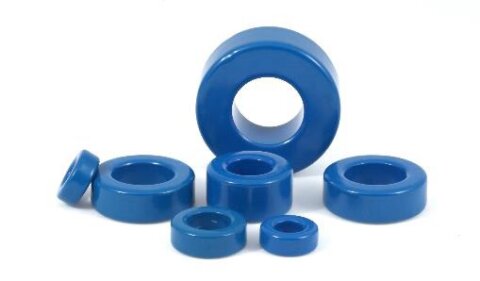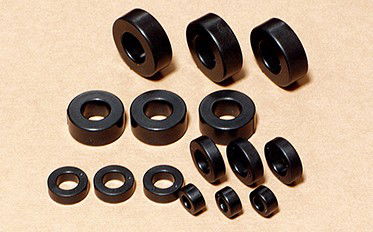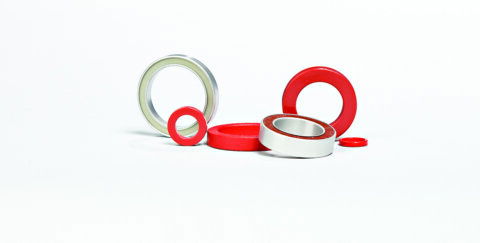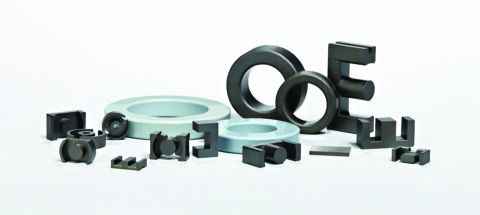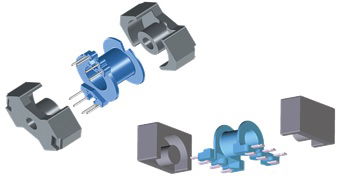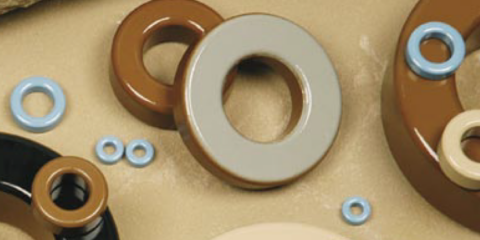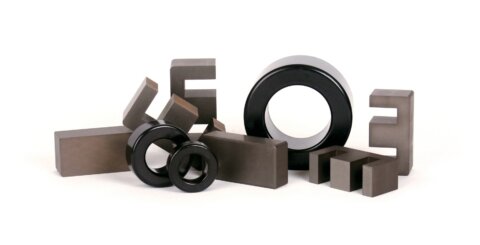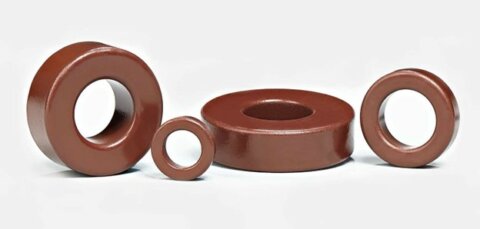Ferrites for inductors and power transformers
- Technology
- Ferrite cores
- Partner
- Magnetics Inc.
Ferrite cores are dense, homogeneous ceramic structures made by mixing iron oxide (Fe2O3) with oxides or carbonates of one or more metals such as manganese, zinc, nickel, or magnesium. Magnetics® soft ferrite cores are manganese zinc ferrites (MnZn).
Magnetics R, P, F, T, and L materials provide superior saturation, high-temperature performance, low power losses, and product consistency.
T material is ideal for consistent performance over a wide range of temperatures like automotive. L material was formulated for high frequency and high-temperature applications like DC/DC converters. R material is the economical and low-loss choice while P material similar to R. B material is the highest permeable material of this group.
Power Supplies, DC/DC converters, a high power control (gate driver), and EMI filters are a few of the typical applications for Magnetics Inc. ferrite power materials.
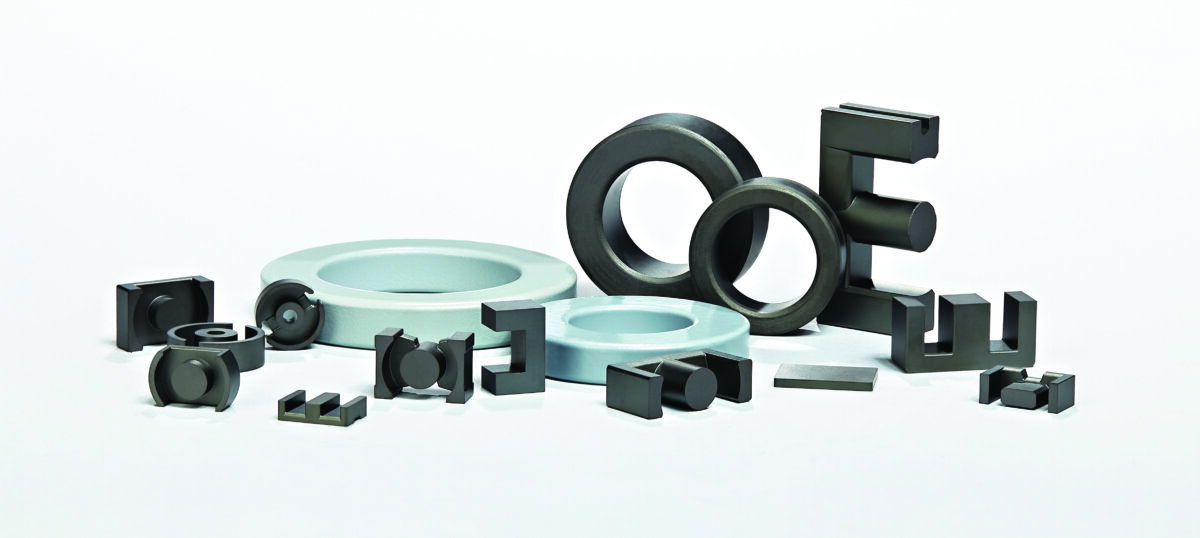
Range features
A high level overview of what this range offers
- T material stable in a wide range of temperature
- L material designed for high frequency (500 kHz – 3 MHz)
- R multi-purpose material, minimize losses at 95°C
- P material similar to R and with a wider shape offer
- F material with higher permeability VS R and P, and minimises losses at 60°C
- Superior saturation (Bsat)
- Low power losses
- High temperature performances
- Available on most of the shapes: toroids, E, U, I, pot cores, planar, EP, RM, PQ, RS, and DS
What’s in this range?
All the variants in the range and a comparison of what they offer
| Material | µi at 25°C | Bsat (mT) at 25°C | Tc(°C) | Pv (100°C 100KHz 100mT) mW/cm3 | Resistivityρ Ω*m | Notes |
|---|---|---|---|---|---|---|
T | 3000 | 530 |
| 55 | 5 | Highest Bsat, flat losses over temp |
L | 900 | 420 |
| 115 @500KHz 50mT | 10 | High frequency applications |
R | 2300 | 470 |
| 58 | 5 | Lowest losses at 100°C |
P | 2500 | 470 |
| 45 @120°C | 5 | Most available |
F | 3000 | 470 |
| 60 @60°C | 5 | Min losses at 60°C |
